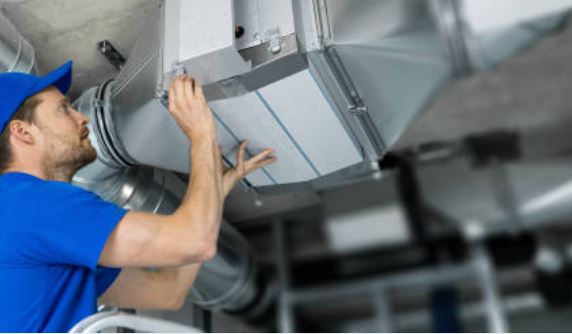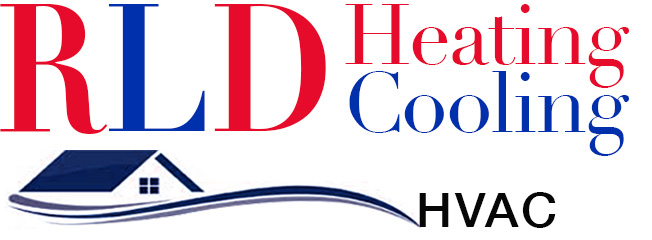Forced air VS Central air– The better one!

Forced air and central air HVAC system refer to the heating and cooling elements.
You may hear the terms “forced ac” and “central ac”(1) used in place of each other quite often as they refer to the same system in your house.

call 310-926-6368
Contact 24/7 our scheduling department today
Both air systems are essential for maintaining indoor air quality and the overall atmosphere of your house.
But sometimes, choosing between both systems can be a hassle!
So, as experts, we are here to help you decide which air system is suitable for your home by looking at various factors.
Also, both forced air and central air systems have pros and cons. (Read more here about Types of Central Air Conditioners>)
We recommend that you enjoy the benefits of both systems to improve your home’s indoor air quality & environment and understand when you eventually will need air conditioner repair services.
So, let’s start with understanding the fundamental difference between Forced air and central air systems.
Difference between forced air and central air systems

The primary difference between central and forced air systems is, forced air refers to the heating system, while central air refers to the cooling system. However, these terms are used interchangeably. It happens because your central air system uses the forced air system’s ducts and vents to deliver cool air into your home.
A central air conditioning system produces hot or cold air in a central location and delivers the conditioned air to your surroundings. Your air conditioner, independent of your furnace, is a central air system that uses an outside unit to create cool air.
The outside system in a central air conditioning unit uses a compressor, condenser, and evaporator coils to loop recycled, conditioned, and cool air in your home. The condenser and compressor are fitted and placed on the outdoor unit. They work along with the evaporator coils to pull hot air and release refrigerated air using ducts and vents.
A forced air system is a delivery method for any HVAC system. It uses air ducts and vents to send temperature-controlled and conditioned air into your surroundings. Most of the time, forced air systems are associated with heating systems since they originate from heat pumps and furnaces.
How forced air work?

How a forced air system functions depend on the kind of heating element used in the house. A furnace either uses gas or electricity to heat air. It also uses a blower fan to push the hot air through the ducts and vents.
A heat pump pulls heat energy or warm air from the outside environment and transfers that heat to air inside the pump. This conditioned air is then blown through the ducts.
Pros

Forced air systems are an effective and affordable option for providing quick indoor heating during the colder months. Compared to other systems, the process of distributing warm air throughout your surroundings is fast and takes little to no time.
Forced air heating units work with existing systems, which is advantageous for installation. If you have existing ductwork for your AC unit, the same will work with a forced air heating system. It means the installation process is much faster for HVAC installation technicians.
Cost-effectiveness is another significant advantage of forced air systems. They are not expensive as radiant heaters. As a result, forced air systems are highly effective at a reasonable price.
Cons

Forced air systems have their share of cons that needs to be considered. One of the important ones is the potential health risks the entire household can experience. Pushed conditioned air from the forced air systems may carry dust, mold, and other airborne particles.
Another disadvantage is the likelihood of leaks within the ductwork. These will introduce pollutants into your environment and also cause an increased electricity utilization causing higher monthly energy bills.
Changing the air filters at least three times a month depends on the general indoor environment. Also, proper duct design, installation, and maintenance are vital for the long-term efficient performance of forced air systems.
How does central air work?

A central air conditioning system includes two major components: an indoor unit with evaporator coils and an outdoor unit that accommodates a fan, condenser coils, and a compressor.
When you turn on the central AC, room air is pulled into the indoor unit, where heat is drawn out of the air as it passes through the evaporator coils. This cooled and conditioned air is then forced through the ducts and vents into the atmosphere of your home. The absorbed heat is transferred to the outdoor unit and released into the outer air.
Pros

The summers can get tough if you live in a hot and humid region. A central air conditioning system can ensure consistent temperature throughout your indoor spaces, along with cleaner air. Central air systems allow you to feel comfortable by providing even temperatures instead of having separate window AC units.
Another benefit of installing a central air conditioner regarding the forced air system is that it often runs quietly. You won’t even notice when it is turned on. You may hear faint clicks and blowing sounds produced as the thermostat kicks it into gear.
Also, the outdoor units of the central air systems are not visible to all. It improves the aesthetics of homes and businesses. In a commercial setup, they are commonly installed on rooftops. In residential installations, they are usually found either at the back or side of the house.
Cons

Central air systems offer several advantages, but like forced air systems, there is another side of the coin with its disadvantages. For instance, there is an additional expense to set up the ductwork. Internal humidity might also prevent central air conditioners from effectively cooling the environment. Therefore, ducts should be appropriately designed and installed, especially in a hot and humid region.
Another drawback of central air systems is the potential for inefficient cooling. If the entire system is not correctly designed and installed based on the dimensions of your property, it may not be able to efficiently cool your entire indoor space. It also means that you will have to close all the doors and windows every time. As a result, the central air system unit has to work twice, leading to higher energy bills.
How to decide which system is the best choice for you?

Deciding on what type of HVAC system is right for you can be challenging. Fortunately, we have an expert team of technicians to help you make a correct and beneficial decision.
If you are unsure what best suits you, the first consideration should be system compatibility with your home or business. You may consider a ductless mini-split unit if you don’t have existing ductwork. These can provide temperature-controlled and conditioned air to whatever room you need.
If you are located in a place where temperature control is essential during different weather conditions, you may consider getting a central air system for your home. Though it is expensive, it is worth the extra money to live and breathe in comfort.
Our certified HVAC technicians at RLD services offer same-day and even emergency services. We also have several financing options for you to make the job more affordable. Contact us today to get started!
FAQS

Here are a few questions people generally ask about Forced air V/S Central air:
Forced air VS central air FAQ #1: Is forced air the same as central air?
No. Even though both systems might be used interchangeably as they are somewhat similar, the forced air system is not the same as the central air system.
The primary difference between central and forced air systems is that forced air refers to heating and distribution systems, while central air refers to cooling systems.
Forced air VS central air FAQ #2: Is my AC unit forced air?
If your AC unit is heating, it may be forced air. Just check once if there is either an electric or gas furnace installed.
A forced air system functions as a delivery system for any HVAC system. It uses air ducts and vents to send temperature-controlled and conditioned air into your surroundings. Most of the time, forced air systems are associated with heating systems since they originate from heat pumps and furnaces.
A furnace either uses gas or electricity to heat air. It also uses a blower fan to push the hot air through the ducts and vents.
A heat pump pulls heat energy or warm air from outside air and transfers that heat to air inside the pump. This conditioned air is then blown through the ducts.
Forced air VS central air FAQ #3: Is the forced air system good?
A forced air system has its advantages and disadvantages.
Forced air systems are effective and affordable.
It is also fast compared to other systems.
The installation process is much quicker as it works with existing ducts and vents.
Cost-effectiveness is another significant advantage of forced air systems.
Forced air VS central air FAQ #4: What are the two disadvantages of forced air systems?
The two major disadvantages of a Forced air system are:
- Uneven temperature: Sometimes, even when the forced air system is working, the result can be uneven temperature, as some areas may be more excellent while others are warm. The reason is- the hot air tends to rise, making the second floor warmer than the first. Also, the positioning or placement of windows may have a meaningful effect on the heat level. For instance, windows facing south receive more sunlight than those facing north.
- Allergens: As the air from outdoors is brought inside, it often carries dirt, dust and pollens, creating a harmful condition for residents with asthma or allergies. So, it is better to replace the filters regularly. Additionally, if there is some visible mold growth or the presence of dust, debris, odor, or insect infestation, immediately get your filters cleaned by a professional, or you might have to spend thousands of dollars later.

call 310-926-6368
Contact 24/7 our scheduling department today
Address
8040 Deering Ave #5
Canoga Park, CA 91304
Tel 310-926-6368
Email rldheatingcoolingcompany@gmail.com
Opening Hours
Monday 8:00 am – 8:00 pm
Tuesday 8:00 am – 8:00 pm
Wednesday 8:00 am – 8:00 pm
Thursday 8:00 am – 8:00 pm
Friday 8:00 am – 8:00 pm
Saturday 8:00 am – 8:00 pm
Sunday 9:00 am – 5:00 pm
